Links:
IranVisitor.com
Blogs:
Bazaar Dispatch
Iran News Blog
Iran Travel & Tourism
Tools:
Calendar Converter

|
By: Bijan M. Sadeghi |
|
Tabriz: |
Tabriz, the largest city in north-western Iran, is situated north of the volcanic cone of Sahand south of the Eynali mountain. It is the capital of East Azarbaijan Province.
Historically, the founding of the city is shrouded in mystery. Most sources mention the Sassanid era, while others believe it to be even further back in history. Violent earthquakes have wiped out most of the historic monuments of Tabriz. The language in the city is Azarbaijani, although almost all inhabitants of the city can speak Farsi as well. The music and folksongs of Tabriz are popular and traditions have a long history among its people. The handicrafts in the Bazaar of Tabriz, and in particular the Tabriz rug is famous world-wide. The culture, social values, language and the music is a mixture of what exists in rest of Iran.
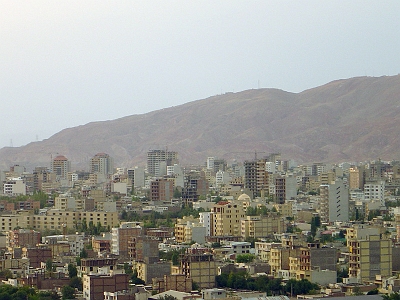
Shah-goli is the name of a large park in Tabriz. It was used as a summer palace during Qadjar dynesty (when Tabriz was the official residence of Prince of Iran). It contains a palace that is surrounded by a great square water pool almost 5 meter depth. During 2nd Pahlavi's it was reconstructed.
After Iranian Revolution of 1979 the name of Shah-goli was changed to Eal-goli in official documents in but the name in common use continues to be Shahgoli.
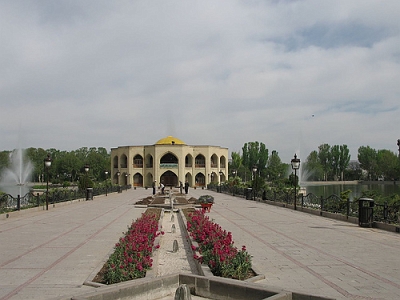
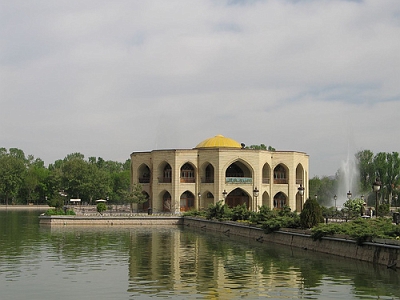
Tabriz, the Blue Mosque, 1465. This superb mosque was built under the patronage of Saliha Khanum, the daughter of Jahan Shah Qara Qouonlu. The central domed sanctuary was 16 meters in diameter and decorated with a profusion of some of the finest title mosaic produced in the fifteenth century including a rich inscription with gold highlights. The mosque was severely damaged in an earthquake in 1778, leaving only the entrance iwan.
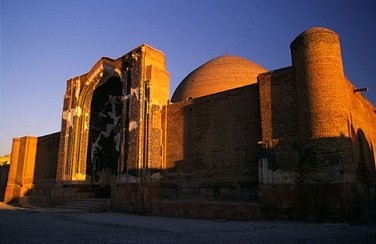
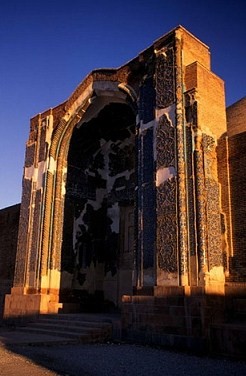
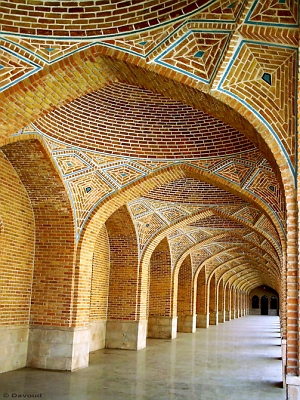
Arg e Ali-Shah also known as Arg e Tabriz, is a remnant of a fortress built in the Ilkhanate period. Historians believe that it was used as a military castle but clerics claim that the structure was initially used as a mosque in its early days, but during the Qajar era was used as a military post, and storage facility for weapons (in Persian Ark means castle).
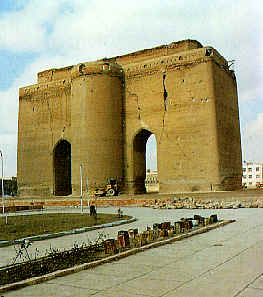
The Bazaar of Tabriz, located in the center-city Tabriz, is one of the oldest and largest bazaars in the Middle East. It is said that it is the largest closed one-roofed structure in the world. Bazaar of Tabriz has a very good outlook.
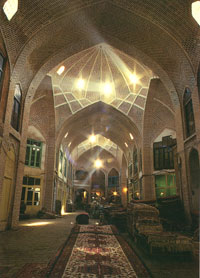
Saat Tower or Tabriz City Hall is the head office of the municipal government of Tabriz. It was created in 1895 by Arfa'ol Molk. After World War II it was used by the Azerbaijan Democrat Party as a Government Office. After Iranian troops taking power back the building is used as Tabriz municipal central office. Saat means clock in Persian and Azeri branch of Turkish language.
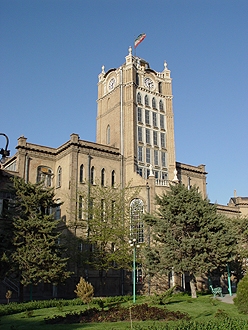
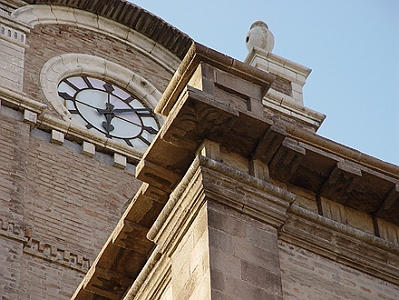
Tabriz is the hometown of famous poets such as Homam, Qatran, Shams-e Tabrizi, Kamal Khojandi, Shahriar, Sa'eb, Zahir Fariabi . "Maqbaratusho'ara" is a place built to remember them. Next to that, there is the tomb of Seyyed Haza.
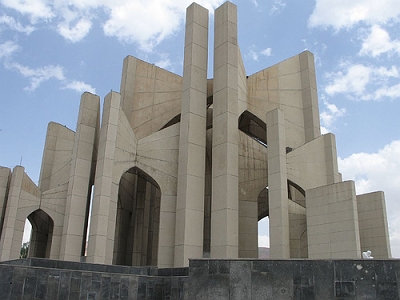
Saheb ol Amr is a building was built as a mosque by Shaah Tahmasb Safavai on the east side of Saaheb Aabaad square in 1636. After capturing Tabriz by Ottaman Soltan Morad forth and his soldiers, the building was destroyed. By retaking power with Persian troops the Mosque was constructed again, however because of the hard earthquake it was badly demolished. Goli Khan Danbali reconstructed the whole square again. In favor of people the dome was called Saheb-Ol-Amr Dome. In 1850 Mirza Ali Akbar Khan who was the Russian Consulate interpreter rebuilt some other parts of dome & also repaired the corridor plus adding some mirror works.
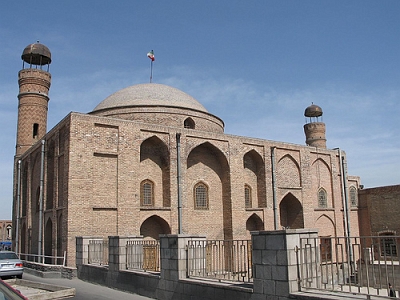
The Iranian Constitutional Revolution originated in Tabriz and culminated during the reign of Mohammad Ali Shah of Qajar dynasty (1779-1925). Sattar Khan and Baqer Khan were the two most prominent leading figures behind the movement. During the years which led to the Constitutional Revolution and afterwards, the Constitution House which is located next to the Tabriz grand bazaar, was used as the gathering place of the leaders, activists, and the sympathizers of the movement, among them Sattar Khan, Baqer Khan, Seqatoleslam and Haji Mirza Aqa Farshi.
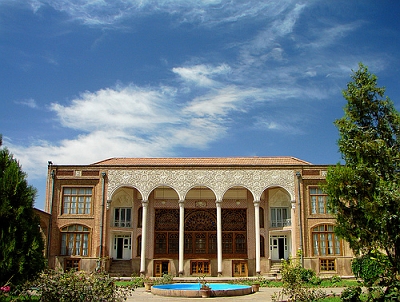
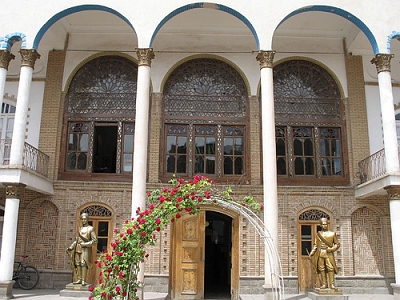
Jame Mosque (Friday Mosque) is one of the historical mosques of the area. Throughout the ages this mosque has flourished and today is the seat of theology and place for religious ceremonies.
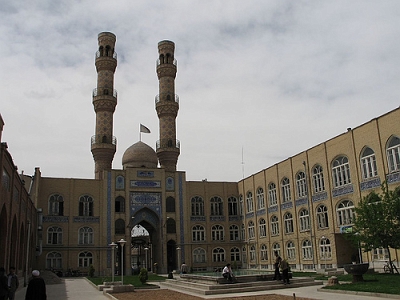
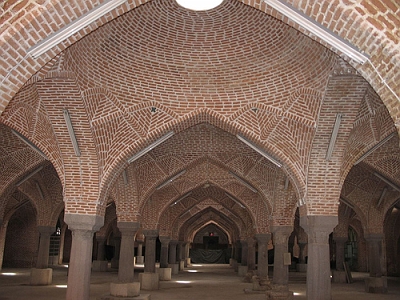
Seyed Hamzeh Mausoleum is also a place for pilgrimage and very beautiful. It is the remnant of the Safavid and Qajar eras. The initial date of this structure is the beginning of the 8th century A.H.
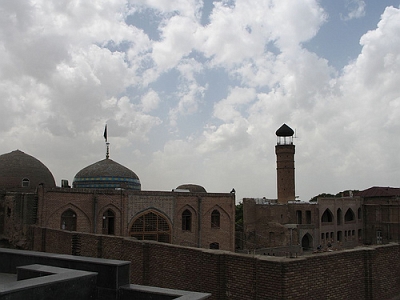
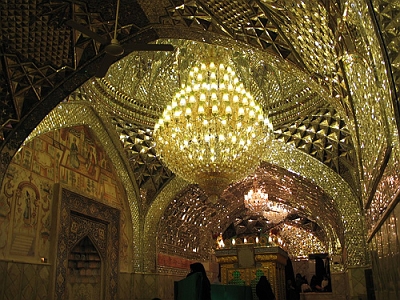
Kandovan (also spelled Candovan) is a touristy village near Osku and Tabriz. Its fame is due to its special houses which are carved inside rocks. These houses date back to about 3000 years ago and are still being inhabited. Kandovan also has a scenic beauty. It's a popular resort and there are hotels and restaurants there to serve tourists. Its mineral water is also popular by visitors and is believed to be a cure for kidney disease.
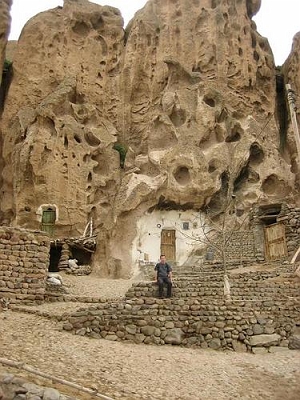
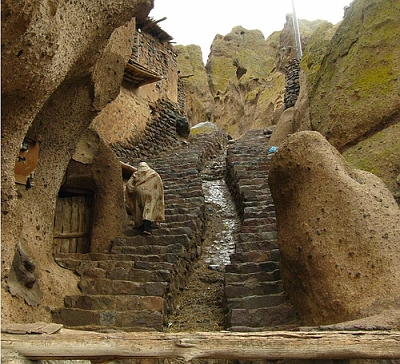
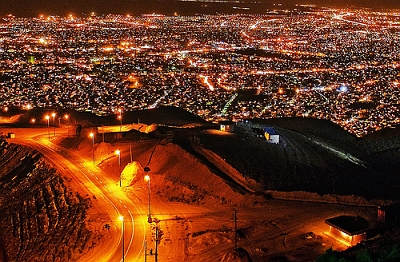
God Bless Tabriz!
Your Comment: |
|
| Rate : | |
| Name : | *Required |
| Email : | *Confidential |
| Comment : | |
 |
|